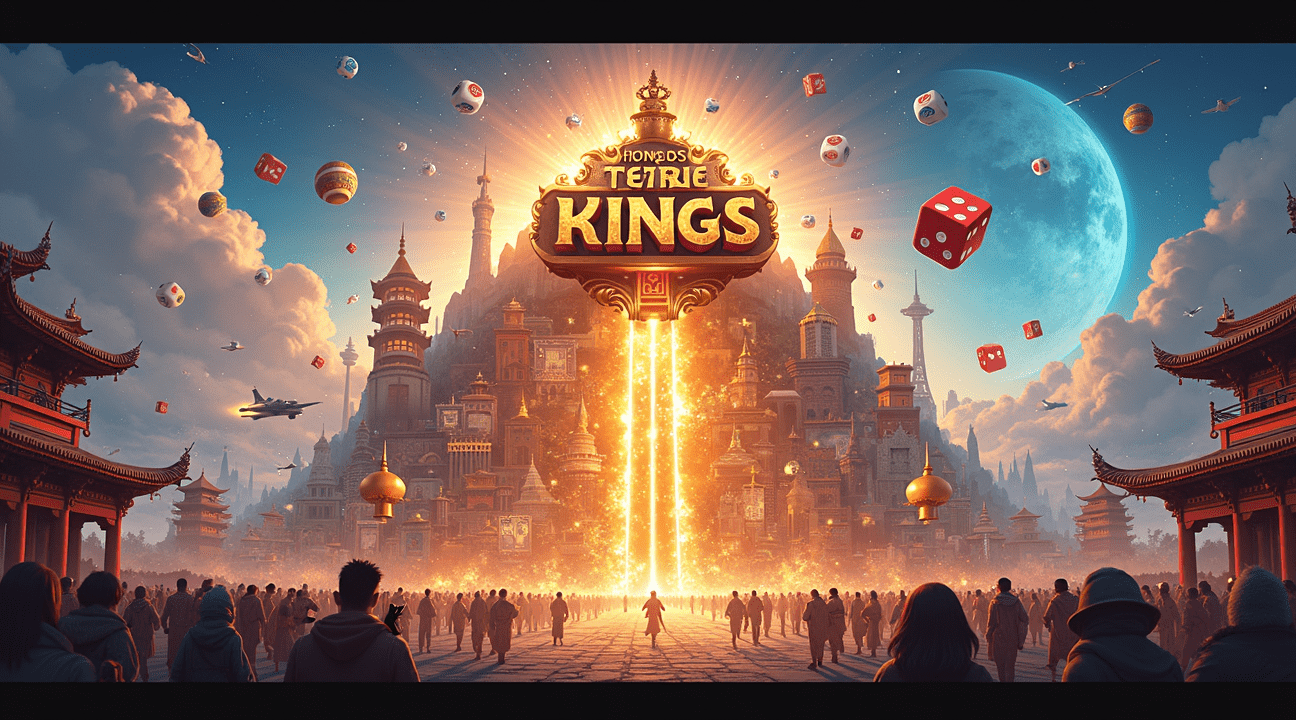Mobile gaming has surged to unprecedented market leadership, earning over $111 billion worldwide in 2025 and capturing more than half of all global gaming revenue. With 3.3 billion active mobile players currently and projections reaching 2.5 billion users by 2030, the industry shows remarkable scale and sustained growth despite market stabilization in key regions.
Key Takeaways
- Mobile gaming revenue hit $111 billion in 2025, representing over 50% of global gaming income, with the industry maintaining consistent 3% year-over-year growth.
- Asia and MENA regions drive global expansion with $89 billion in combined revenue, powered by emerging markets like India (14.7% growth), Turkey (28% growth), and Mexico (21% growth).
- Mobile gaming’s accessibility through smartphones, free-to-play models, and advanced device capabilities has broadened the audience to include casual players who previously avoided traditional gaming platforms.
- Honor of Kings leads the mobile gaming revenue charts while mobile games achieved 4.3 billion monthly downloads in May 2025, with India accounting for 20% of global downloads.
- The industry is maturing with fewer new game releases but higher consumer spending per download, signifying that players value quality experiences and are willing to invest more in engaging titles.
Mobile gaming’s exponential rise has solidified its place at the forefront of entertainment. Key indicators such as consistent financial growth, emerging market expansion, and structural evolution suggest that this sector will remain a dominant force. To learn more about the global mobile gaming trends, visit Business of Apps Mobile Gaming Statistics.
Mobile Gaming Market Hits $111 Billion as Industry Dominates Half of Global Gaming Revenue
The mobile gaming industry has reached unprecedented heights, positioning itself as the dominant force in global entertainment. Current projections show mobile games generating over $111 billion worldwide in 2025, with conservative estimates placing annual figures between $120 and $130 billion. This staggering revenue represents more than 50% of all gaming income globally, cementing mobile gaming’s position as the industry leader.
The momentum behind these figures is particularly striking when examining recent performance data. Mobile games generated $92 billion in revenue during 2024, marking a solid 3% year-over-year increase that demonstrates sustained market expansion. This growth trajectory continues despite market maturation in several key regions, indicating the sector’s resilience and adaptability.
What makes these revenue figures even more remarkable is the sheer scale of the mobile gaming audience. The current user base has already reached 3.3 billion active mobile gamers worldwide, a number that dwarfs traditional console and PC gaming populations combined. Industry analysts predict this audience will expand to 2.5 billion users by 2030, representing nearly 42% of the global population as of 2025.
Market Dynamics Driving Explosive Growth
Several key factors contribute to mobile gaming’s market dominance and continued expansion:
- Accessibility of smartphones: The widespread use of mobile devices has eliminated traditional barriers to gaming entry. Developers can now reach vast audiences previously untapped by conventional platforms. Major companies like Sony have recognized this shift, establishing divisions specifically for mobile game development.
- Flexible revenue models: Mobile gaming benefits from diverse monetization approaches such as free-to-play mechanics, in-app purchases, and advertising integrations. These have proven highly effective in generating sustainable income streams while keeping games accessible to broad audiences.
- Regional market expansion: Strong adoption rates in emerging markets across Asia, Latin America, and Africa drive much of the sector’s growth. In many of these areas, users skip traditional gaming platforms entirely, opting instead for mobile-based gaming experiences.
- Wider demographic appeal: Mobile gaming now includes offerings for every taste—from casual gamers who enjoy daily puzzles to competitive multiplayer enthusiasts. This broad spectrum has drawn in users who previously did not identify as gamers.
- Technological advancement: With modern mobile devices offering better processors, enhanced graphics, and widespread 5G connectivity, mobile games now rival the depth and performance of console titles. This evolution appeals increasingly to seasoned gamers as well.
Industry forecasts suggest mobile gaming will continue outpacing other gaming segments in both user base and revenue through at least 2027. This sustained growth outlook reflects not only the current momentum but also the inherent advantages mobile platforms offer in terms of accessibility, convenience, and global reach.
The economic impact extends far beyond direct gaming revenue:
- Hardware sales: Smartphones and accessories tailored to gaming continue to see rising demand.
- Advertising: Mobile games provide valuable real estate for brand campaigns, often generating significant ad revenue.
- Content ecosystems: Mobile gaming supports a vast network of influencers, streamers, and developers who build communities and monetizable platforms of their own.
Investment in mobile gaming infrastructure continues to accelerate. Major publishers are allocating an increasing share of development budgets to mobile projects. This resource commitment not only ensures sustained innovation but also fuels content quality improvements likely to drive continued growth into the next decade.
The convergence of these factors creates a powerful foundation for mobile gaming’s continued market leadership, suggesting the $111 billion milestone represents just the beginning of the industry’s revenue potential.

Asia and MENA Lead Global Expansion with $89 Billion in Regional Revenue
I find the explosive growth in Asia and MENA gaming markets truly remarkable, as these regions are set to generate a combined $89 billion in revenue by 2025. With 1.76 billion gamers across these territories, the scale represents an unprecedented opportunity for mobile gaming expansion.
China continues to dominate this landscape, with projections pointing to a $50 billion gaming market in 2025. What’s particularly striking is that two-thirds of this massive revenue will come from mobile games, highlighting how smartphones have become the primary gaming platform. This shift demonstrates why Sony develops division strategies specifically for mobile gaming markets.
Emerging Markets Drive Exceptional Growth Rates
Several emerging markets showcase extraordinary growth patterns that I believe will reshape the global gaming industry:
- India’s gaming market surged 14.7% year-over-year, reaching the $1 billion milestone
- Turkey experienced an impressive 28% increase in consumer spending on games
- Mexico posted strong 21% growth, establishing itself as a key Latin American market
- Thailand demonstrated robust expansion with 16% growth
- Saudi Arabia achieved solid 14% growth, leading MENA region development
These growth rates far exceed traditional gaming markets and indicate where future opportunities lie. Meanwhile, established Asian markets like Japan and South Korea are expected to plateau in 2025, though growth should resume in 2026 as market conditions normalize.
The discovery mechanism for new titles has evolved significantly in these regions. Over one billion gamers in Asia and MENA actively engage with esports and gaming streams, creating powerful platforms for game discovery. This engagement pattern helps explain why mobile games can achieve rapid adoption rates across diverse cultural and economic backgrounds.
I see streaming platforms becoming increasingly crucial for game publishers targeting these markets. The integration of social features, live streaming capabilities, and community-driven content mirrors trends I’ve observed in successful titles like Genshin Impact, which leverage multimedia approaches to maintain player engagement.
Revenue diversity across these markets creates stability for publishers willing to invest in localization and cultural adaptation. While China provides massive scale, the distributed growth across India, Turkey, Mexico, Thailand, and Saudi Arabia offers multiple pathways to success. This geographic spread reduces dependency risk while maximizing revenue potential across different economic conditions and regulatory environments.

Why Everyone is Playing Mobile Games Now
I’ve witnessed an incredible transformation in gaming habits over the past few years, with mobile gaming becoming the dominant force across all demographics. Accessibility stands as the primary driver behind this phenomenon, as smartphone ownership has reached unprecedented levels globally. Unlike traditional gaming platforms that require dedicated consoles or high-end computers, mobile games eliminate these barriers entirely—anyone with a phone can instantly access thousands of titles.
The free-to-play model has revolutionized how people approach gaming, making entry completely frictionless. I see players downloading games without hesitation because there’s no upfront cost, allowing them to explore various genres and experiences risk-free. These F2P games rely on sophisticated monetization strategies that have proven incredibly effective, generating billions in revenue through:
- Microtransactions
- In-app advertisements
- Hybrid models that combine both approaches
Hardware and Network Improvements Drive Quality
Modern mobile devices now rival traditional gaming systems in processing power and graphics capabilities. I’ve observed how premium smartphones can deliver console-quality experiences that would have been impossible just a few years ago. The growing adoption of 5G networks has further enhanced this experience, providing the low-latency connections necessary for real-time multiplayer gaming and cloud-based titles.
Social features have become integral to mobile gaming success, with developers creating robust community-building functionalities that keep players engaged long-term. I notice how features like guild systems, chat functions, and collaborative events foster genuine connections between players. Many games now include anime adaptations and branded IP collaborations that tap into existing fandoms, creating special in-game events that drive both excitement and spending activity.
The convenience factor can’t be overstated—mobile games fit seamlessly into daily routines. Players can enjoy quick sessions during commutes, lunch breaks, or while waiting in line. This accessibility has expanded the gaming audience beyond traditional demographics, bringing in casual players who might never have considered purchasing a console. Sony’s mobile gaming division exemplifies how major companies are recognizing and investing in this shift.
Mobile games also benefit from constant updates and live service models that keep content fresh. Unlike static console releases, these games evolve continuously with new characters, events, and features that maintain player interest over months or years.
Streaming integration and social media sharing capabilities allow players to showcase achievements and attract friends, creating organic growth through personal networks rather than traditional marketing channels.

Honor of Kings and Monopoly Go Lead Revenue Charts as Games Hit 4.3 Billion Monthly Downloads
I’ve watched Tencent’s Honor of Kings maintain its grip on global revenue charts throughout 2024 and into 2025, proving that region-specific content can achieve worldwide financial dominance. Despite being exclusive to China, this title continues to outperform competitors across all markets, setting industry standards for mobile game monetization.
The competition behind Honor of Kings tells an equally compelling story. Scopely’s Monopoly Go has secured a consistent second-place position, while Dream Games’ Royal Match rounds out the top three highest-grossing titles. These games demonstrate how familiar brands and polished gameplay mechanics can generate substantial ongoing revenue streams.
Explosive Growth Stories Define the Mobile Market
Two standout performers have captured my attention with their remarkable year-over-year growth trajectories:
- FunFly’s LastWar nearly doubled its revenue from $438 million to $895 million within a single year, showcasing how strategic content updates and player engagement initiatives can dramatically transform a game’s financial performance.
- Century Games’ Whiteout Survival achieved similar success, jumping from $369 million to $834 million in the same timeframe.
These growth patterns reflect broader shifts in mobile gaming preferences. Players increasingly favor games that offer long-term progression systems and social interaction elements. Sony’s focus on mobile gaming strategies aligns perfectly with these market trends.
Download Numbers Reach New Heights
May 2025 marked a significant milestone with global mobile game downloads reaching 4.3 billion, representing a 9.8% increase from the previous month. India emerged as the primary driver of this growth, accounting for 20% of total downloads worldwide. This geographic concentration highlights how specific regional markets can influence global download statistics.
Event-driven growth strategies continue to prove their effectiveness across multiple titles. Mobile Legends: Bang Bang experienced a substantial player base expansion following an India-focused event combined with an exclusive Naruto collaboration. These targeted campaigns demonstrate how cultural partnerships and regional customization can generate immediate download spikes. The success of anime adaptations in gaming further supports this collaborative approach.
Major publishers have recognized these patterns and adjusted their development timelines accordingly. The industry’s shift toward live-service models enables developers to capitalize on trending events and cultural moments more effectively than traditional release cycles allowed.

How Mobile Games Make Money: From Ads to Subscriptions
I’ve observed the mobile gaming industry’s monetization strategies evolve dramatically over the past decade, with developers now embracing multiple revenue streams to maximize their earnings. The traditional model of selling games upfront has largely disappeared, replaced by sophisticated systems that generate continuous revenue from engaged players.
Core Revenue Models Driving Success
The three primary monetization methods dominating today’s market each serve different player preferences and game types:
- In-app purchases (IAP) remain the cornerstone of revenue generation, allowing players to buy cosmetics, power-ups, or premium content.
- In-app advertisements provide developers with consistent income while keeping games free-to-play for users.
- Subscription models offer premium experiences and exclusive content for dedicated players willing to pay recurring fees.
Despite the appeal of subscription services, only about 20% of the top 1,000 highest-grossing games rely on subscriptions as their primary revenue strategy. This statistic reveals that most developers still depend heavily on IAP and advertising revenue to sustain their operations.
The Shift Toward Hybrid Monetization
Smart developers now implement hybrid monetization models that combine multiple revenue streams rather than relying on a single approach. This strategy allows them to capture revenue from different player segments – from casual users who engage with ads to dedicated players who make regular purchases.
Global ad spending in mobile gaming continues its upward trajectory, with projections showing it will reach $390 billion by the end of 2025. This massive investment reflects advertisers’ confidence in mobile gaming’s ability to reach engaged audiences effectively. Companies like Sony are developing dedicated divisions specifically for mobile gaming, recognizing the platform’s revenue potential.
The industry has also witnessed a significant shift in release patterns. Despite a notable 43% drop in newly released titles – from 222,000 in 2023 to 126,000 in 2024 – consumer spending per download surged by more than 11%. This trend indicates developers are prioritizing quality over quantity, creating more polished experiences that justify higher player investment.
Games that successfully implement these monetization strategies often build strong community engagement. Popular titles like Genshin Impact demonstrate how compelling content can support multiple revenue streams simultaneously.
The evolution from quantity-focused releases to quality-driven development reflects the maturation of mobile gaming as a serious entertainment medium. Players now expect console-quality experiences on their devices, and they’re willing to pay premium prices for games that deliver exceptional value through carefully crafted monetization systems.

Fewer Downloads but Higher Spending Shows Gaming Industry Maturation
The mobile gaming landscape reveals a fascinating paradox in 2024. While global mobile game downloads dropped by 7%, consumers are spending more money and engaging more deeply with their chosen titles. This shift signals a mature market where players prefer quality over quantity, investing their time and money in fewer but more sophisticated gaming experiences.
This evolution reflects how players have become more selective about their gaming choices. Instead of downloading multiple games to try them briefly, users now commit to titles that offer substantial content, ongoing updates, and meaningful social experiences. The result is stronger player retention and increased lifetime value for developers who can capture and maintain audiences.
Viral Moments Drive Mainstream Success
Social media trends and viral content continue to propel mobile games into widespread popularity with unprecedented speed. Gen Alpha slang and meme-based content serve as powerful catalysts that can transform an unknown game into a cultural phenomenon overnight. These viral moments often originate from gaming streams or user-generated content that resonates with younger audiences.
The rapid spread of gaming content through platforms like TikTok and YouTube demonstrates how modern game discovery works. A single viral video featuring unique gameplay or amusing moments can generate millions of downloads within days, creating opportunities for smaller developers to compete with established studios.
Console Growth vs Mobile Dominance
Looking ahead to 2025, the console gaming sector shows promising growth projections, primarily driven by highly anticipated new game releases. Major studios are preparing to launch flagship titles that could significantly boost console sales and engagement. However, mobile gaming development continues to maintain its market leadership position.
The accessibility and convenience of mobile gaming ensure its continued dominance despite console sector growth. Mobile games don’t require expensive hardware investments, making them accessible to broader global audiences. Players can enjoy sophisticated gaming experiences during commutes, breaks, or any spare moment throughout their day.
Direct-to-consumer payment strategies are emerging as game-changers for publisher revenue streams. These approaches reduce dependency on traditional app store fees and intermediary services, allowing developers to retain larger portions of their earnings. Publishers can establish direct relationships with their audiences, enabling more personalized marketing and monetization strategies.
The shift toward D2C models also provides developers with valuable first-party data about their players. This information helps studios create more targeted content updates, personalized offers, and effective retention campaigns. The reduced reliance on external platforms gives publishers greater control over their customer relationships and revenue optimization.
Gaming streams and esports continue to influence spending patterns, with viewers often purchasing items or upgrades for games they watch regularly. This connection between viewing and spending creates additional revenue opportunities for publishers who can effectively integrate their games into streaming culture.
The industry outlook suggests that successful mobile games will increasingly focus on building communities rather than simply attracting downloads. Games that foster social connections, encourage user-generated content, and provide regular fresh experiences are positioned to capture the largest share of consumer spending.
Market forecasts indicate that the mobile gaming future lies in premium experiences that justify higher spending. Players demonstrate willingness to invest substantially in games that provide ongoing value, whether through regular content updates, competitive features, or social interaction opportunities. The emphasis shifts from acquisition metrics to engagement depth and revenue per user.
The maturation of the mobile gaming market creates opportunities for innovative developers who understand that success now depends on building lasting relationships with players rather than achieving viral download spikes. The industry rewards studios that can maintain long-term player engagement through quality content and meaningful gaming experiences.
This evolution benefits both developers and players, as the market moves away from predatory monetization practices typical of the download-focused era. Games that focus on providing genuine value and entertainment tend to generate more sustainable revenue while creating more satisfying experiences for their audiences.
Sources:
Tekrevol – Mobile Game Revenue Statistics
Udonis – Mobile Gaming Statistics
Appfigures – Mobile Games Growth Trends
Sensor Tower – Top Mobile Games Worldwide Revenue & Downloads May 2025
Devtodev – Game Market Overview: The Most Important Reports Published in March 2025
Mobilegamer.biz – 2025’s Top Grossing Mobile Games So Far
Sensor Tower – State of Mobile Gaming 2025


